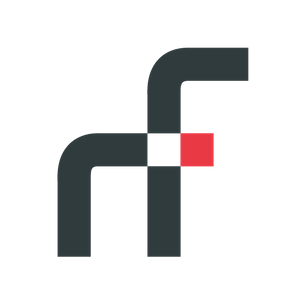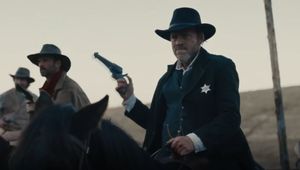
Jess Ringshall on the Importance of Letting Creative Ideas Breathe

The nature of production as the industry knows it is evolving and fast, ushered in by challenges around sustainability, diversity, budgets, and the drive for more content at scale. To discuss all this and more, Remote Filming - the leading remote streaming service technology - is asking the industry’s top production experts about their best practices and the way they’re utilising technology to help overcome the challenges at hand in an ongoing series for LBB.
Anthony Barry, co-founder of Remote Filming says: “We’re all seeing the industry change, I believe that when it comes to tackling the myriad of production issues, especially sustainability, technology is key. Bringing together the right people and the right technology is how we can make a real difference to production, cutting costs, increasing efficiency and making it more sustainable.”
Today, LBB speaks with Jess Ringshall, Saatchi & Saatchi UK’s chief production officer. Jess’s background spans brand partnerships consulting, TV, entertainment, agency, and sound design; all underpinned with a strong commercial focus on what it means to run and grow a business. This means that Jess has not only seen the evolution of the industry, but played a role in many of its aspects directly which, in turn, shaped how she approaches the work today. “How we make ideas is beginning to become as important as the ideas,” states Jess, drawing attention to the vital role production plays in ensuring that great creative actually comes into being. “Everyone can have a good idea until it’s executed,” she adds.
A firm believer in the sentiment that ‘ideas need room to breathe’, Jess is committed to applying the craft of production - aided by new tech, where appropriate - to help see them over the line. This typically looks like having production involved at every stage and from the very start so that there’s a continuous, supportive dialogue between execution and creative. She’s inspired by the agency’s philosophy of making ‘ideas with influence’ that reach beyond planned media, like in the case of EE’s ‘Freedom’ and the ‘wonky’ OOH billboard for Waitrose that got the attention of Wandsworth council - and national media.
Read on to find out how Jess approaches her role and why she feels lucky to be surrounded by peers in Saatchi & Saatchi UK’s C-suite.
LBB> Jess - thanks so much for agreeing to take part in this interview series! Were you always creative growing up? How did you find yourself in a creative industry?
LBB> I definitely knew that I was going to do something creative. Like a lot of people growing up, I didn't know that advertising was an available career option. My experience of being creative was through never being hugely academic. I’m very dyslexic, so my entry point to getting excited about subjects was always either visual or auditory. Even as a little girl I wasn't a great reader, but I was still able to play books through tapes in the library and being able to access the wealth of texts that way. I grew up adoring film and TV, and it was naturally something I gravitated towards. I did things like public speaking and drama as a way to find a voice and to develop my own tastes and opinions.
LBB> Your career history prior to your current role is varied, spanning brand partnerships consulting, TV, entertainment, and even sound design. Do you think this has given you a unique perspective on the industry?
Jess> Yes, absolutely. I didn’t join the advertising industry straightaway. After university, I went into television and broadcast. I was very junior at lots of different TV production companies, I worked on a lot of different TV shows. With TV, a maker and a creator are often one and the same so it’s not as split as advertising. I really enjoyed TV and I then followed that with 10 years in an ad agency. I had this relatively formal training from a production perspective where I made a lot of TV ads when digital was really beginning to take off and the word ‘content’ became a buzzword. I really enjoyed making the hard stuff work, taking on the briefs that weren’t straightforward and wanted to make those ideas happen. That’s actually what led me to brand partnerships once I left Grey.
I used to joke that I had made so much content in my time that it was basically all digital landfill; there wasn’t media attached to it. We kept talking about virality and making content to be shared on social media. That moment felt like IP owners and advertisers can really think about their role within the bigger funnel, from entertainment to music. At Grey, it was a very formative time and Nils [Leonard, founder of Uncommon] was constantly drawing from culture. That’s what we as advertisers, certainly as creatives, do all the time. That’s why that consultancy period at eleven was unbelievably eye opening because I had been in the industry for ten years and suddenly working with media agencies and studios, working with entertainment companies, and seeing how deals are constructed showed me how separate it was from the ideation process. That was incredibly formative for me.
Then going to post production is almost odd but it wasn’t just about the audio output, it was about running a business. I went from being a consultant to then understanding how to commercially run a business and how to bring in work, satisfy clients, and think about diversification. For example, I launched a voiceover agency as part of 750mph and I helped to develop the music supervision component of the company; I also got very involved in talent and helping that area grow. Again, another formative period.
If you’re going to take a C-suite role at a big agency, you’re not just the head of your discipline, you help run the agency commercially. So I did the creative bit, understood the future direction of advertising, and then how to commercially run a business. That diversity really appealed to me. Chris Kay, who was CEO of Saatchi & Saatchi UK at the time, hired me because he understood that craft and commercial sensibility, and I understood where the industry was going. I’m proud that the slightly odd journey brought me back into advertising and at a high level.
LBB> Chief production officer - your role at Saatchi & Saatchi UK - is still a relatively new one. For those not in the know, what does it entail, and do you think we’ll see more CPO roles at agencies soon?
Jess> The CPO role is really interesting. It’s a little like a chief operating officer, but it means very different things to different businesses. If you’re a chief operating officer at a financial company, it’s very different to what you might see in advertising, marketing, or retail. A CPO is responsible for the output and delivery at the agency, as well as the roadmap to growth. While there are quite a few CPOs at agencies, they’ve been kept very much in the craft space and the creative space and much less in the commercial space, like the day-to-day decisions of running an agency. I have to be honest, I’m lucky because my partners are my peers; we’re all reporting to the CEO. I think they also respect not just my discipline knowledge but me as a fellow commercial leader. My position is relatively unique in that way. I have to deliver certain numbers, I obviously run a discipline; I’m also responsible for large components of the operational teams in the agency as well: project management, studio design. How we make ideas is beginning to become as important as the ideas. Everyone can have a good idea until it’s executed. I think the weighting towards the CPO is now in those content and production solutions for clients.
LBB> The role was newly created for you when you joined two years ago - what benefits have you observed from having production in the C-suite?
Jess> A really good example of this is the John Lewis and Waitrose pitch last year. I was in every single meeting with the other disciplines, from the chemistry meeting and all the way through to pitch. My role wasn’t ornamental, I had a big part to play in building the relationships with clients and bringing solutions to the table early on about how we might approach the work. I talk a lot about production being upstream in order to appropriately get to the right solution and allow creative and craft to breathe. I’ve been in the industry for a long time and that was the first time that I’ve been in meetings from chemistry through to pitch. That categorically makes the work better because if production is on the back foot in terms of solutions and budgets then the idea will never get made. It’s not very good to have an incredible idea and no way of making it happen. Early involvement makes that possible. Franki [Goodwin, CCO] is incredibly good at working with me so we can adapt and breathe oxygen into an idea so that there’s a natural place for the execution to fit in, without feeling as though there’s a compromise on the creative.
LBB> What projects over the past two years stand to you and also showcase the magic of what happens when production sits close to other aspects of agency life?
Jess> EE is the most extraordinary example of marketing-led brand transformation and that only happens because of production. We had a relationship with EE for 12 years and a very deep one. There are many authors to credit for that success and the client is incredibly trusting. When we went into shooting those big hero ads, and the rest of the campaign, the client understood exactly what they were going to be getting and even now we’re really transparent and open about the process of making those ideas special. Anyone can do vignette ads, so you’ve got to do vignette ads really, really well in this context. Every agency will have an example of a real person, authenticity-driven creative so to make it stand out is very difficult. Give us another few months and with John Lewis this year, we’ll show you how we can work in a pretty unique way with a client.
LBB> Which industry trends do you find affect what you do most, i.e. sustainability, diversity, different platforms, demand for high volumes of content, etc.? How are you addressing these?
Jess> We think about every single one of those. We’re super users of AdGreen and we spend quite a lot of time training other agencies on how to use the platform and how to talk to clients about the levy and offsetting. I feel proud of the fact that we have always been oriented towards sustainability, not just as a business but on a personal level. From a diversity perspective, we work with our clients upstream in how we hire, the schemes that we run, and our work with Upriser. These are all deeply baked-in initiatives that are long-standing. We’ve made a lot of long-term commitments.
On the tech side, we’ve got EE which is a huge spender in advertising alongside clients that need a more tactical and economical approach to produce the work. We did a campaign last year for TNT where we used some AI for imagery generation. We did an OVO job this year, the Euston station takeover, and AI was baked into the idea and also in the execution in terms of data pulling; it was quite an impressive campaign. We’re already showing how seamlessly we can be working with new technologies. We work on lots of projects and we have to make sure that the creative is working for templating, and we work with a lot of partners to be able to produce content at scale. We have virtual production partners for projects in that space. We’re lucky that as an agency we have lots of clients who are hungry for innovation and change. It’s a fluid experience working on basically a weekly basis on coming up with solutions for clients and using them appropriately.
LBB> What role does technology play, like remote streaming or AI for example, in helping to address the trends shaping the creative industry?
Jess> I talk a lot to clients about using innovation for the right reasons. Scale is a really good example. There's going to be a threshold on the scale at which these technologies become beneficial. We shouldn't be trying to use something for the sake of it. Creativity still has to be able to live and breathe and be at the forefront of the solution. Last year, we shot a project with just a key crew, ECD, and a producer on set while Franki and I attended remotely. So that’s still something that we do a lot.
LBB> As AI becomes increasingly used by the industry, how will this affect the approach to craft?
Jess> We're working on a couple of projects at the moment where AI is very central from the production executional element. But it isn't crushing the creative because we're working so upstream in production and on the solution for a scalable model for the client. If you're only ever going to be looking at innovation and technology through a lens of ‘how you can do something quicker and cheaper’ it’s the wrong approach. AI allows a different route to a creative solution. Those who are adapting and thinking about the future and how they can build a USP against new technologies will find it easier.
LBB> Why do you think as an industry we’re still doing so much travelling for shoots and productions? Is it really necessary?
Jess> Covid was really profound because it showed the industry that we didn’t necessarily need to fly that many people around the world, we could do remote production, and that we could shift our ways of working. It showed that we can trust the process and allow a service company or a director to go out with a few key people from the agency and get the work done. There’s a commercial element to this that I’ve been very cognisant to guide clients to shoot in the UK, not just for sustainability reasons but to get the right diversity of casts or to accurately represent the UK. It’s always a balance of making sure you’ve got the right crew and the right support when shooting. We have clients who really see the value of shooting in the UK, but places like South America and eastern Europe have been quick to adapt and are very sophisticated in their understanding of how to run a green studio, and how to offset some of the travel that’s still required.
LBB> Some brands are mandating a maximum number of people to attend shoots to improve the sustainability of their work. What do you think about this?
Jess> I have to be honest, it’s not something I’ve observed with us. But I think that having key decision makers is only good for the creatives on set. Having the key people on set with a nimble team is only ever a good thing. If the key stakeholders aren’t the ones remoting in or attending then that’s not great, but generally having fewer people is good.
LBB> The ‘noisy content landscape’ conversation is inescapable - what do you think is the key to creating work that cuts through the noise?
Jess> At Saatchi, we talk about ideas with influence. Ideas that don’t just live longer but are experienced in more places than the media that was bought. We all hear about having organic reach on social media and so on, but it’s about ideas that are able to bubble up in different places. Again, to talk about EE, one of the spots we launched last year - ‘Freedom’, directed by Elliot Power’ - we used a Bloc Party track on that. The band then reached out to us and said that that film is much more powerful than their original music video and asked if they could use our footage to recut a music video. We said, sure! That’s a really good example of a work’s influence and where it’s able to live naturally in other spaces. The idea needs to reach beyond the media that’s been bought, and that’s what Saatchi, Franki, Richard [Huntington, CSO], SJ [Sarah Jenkins, COO], and I are really focused on - making sure an idea is influential. We like the term ‘influential’ because advertising is about a behavioural change or an emotional shift, which can live outside of the number of views.
The other example is the OOH work we did for Waitrose. The council where the billboard was put barriers around it, thinking it was falling off the wall. That’s a hard working piece of advertising that then showed up in broadsheets and newspapers for a few days in a really fun way.














